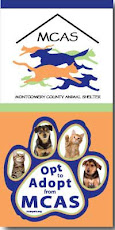
If you had a fairy dogmother, as someone passionate about animal welfare issues, what would you wish for? Would it be for pet owners to spay and neuter all their animals? For low-cost vet care for those who need financial assistance? For the end of back-yard-breeding? Or puppy mills? Or dog auctions? Or kill shelters? Or something else?
If I could ask my fairy dogmother for one wish, it would be for people to realize that a dog is not a toy, a fashion accessory, a movie tie-in, a fad item, or a décor item that will improve your image.
If people to put more thought into their decision to get a dog, many problems would diminish or even entirely disappear. Your dog can be many things, but disposable shouldn’t be one of them.
Puppies are wonderful, but they grow up. And adult dogs are great, but you can’t put them on a shelf or park them in a garage after a year or two. As your dog ages, it’s not fair to your senior dog to hand it off just because you don’t have the commitment to take on the needs of an older animal.
In the volunteer group I work with, we don’t all agree on what makes an ideal adoption candidate. My foundation in dog rescue began with a private group, with the motto, “A Pet Is Not a Toy; It Is For Life.” We were picky about placing animals. Of course, we didn’t always make good judgments, but we took our time. At the Shelter, there are so many animals, it’s tempting to let a lot of things slide and settle for a “good-enough” home rather than the ideal “forever home.”
I know that not every home can be the forever home, but I don’t believe a dog is a good impulse acquisition. Our adoption process at the Shelter makes me feel rushed. It's hard to focus on what's best for the animal when there is continued pressure to keep the adoption numbers moving up. However, just because someone says they want a dog when they see a cute puppy doesn’t mean they need to take a dog home right that moment.
I like for my adopters to consider these questions:
1. Do you realize that a Shelter dog often needs to be re-introduced to the skills needed to be a good pet--such as housebreaking and walking nicely on a leash?
2. Does everyone in the family want a dog, and have you decided who will be the primary caregiver?
3. What will it be like for the dog while you are at work? While you travel?
4. Are you willing to put some time and effort into training a dog?
5. What will you do with the dog when you evacuate for a hurricane?
6. The adoption fee is minimal compared to the yearly costs of maintaining an animal. Are you prepared to spend the money on preventive health care (e.g. heartworm), decent quality food, secure fencing, etc.?
These questions are not on our adoption questionnaire. The answers given indicate, to a large extent, whether the person has done some basic research. This won't guarantee a forever home, but I think it makes for a better starting point.
What wish would you ask your fairy dogmother to grant you or your rescue group? Leave a comment and let me know.
-*-
Photo: My dog Cross patiently awaits your command.



























